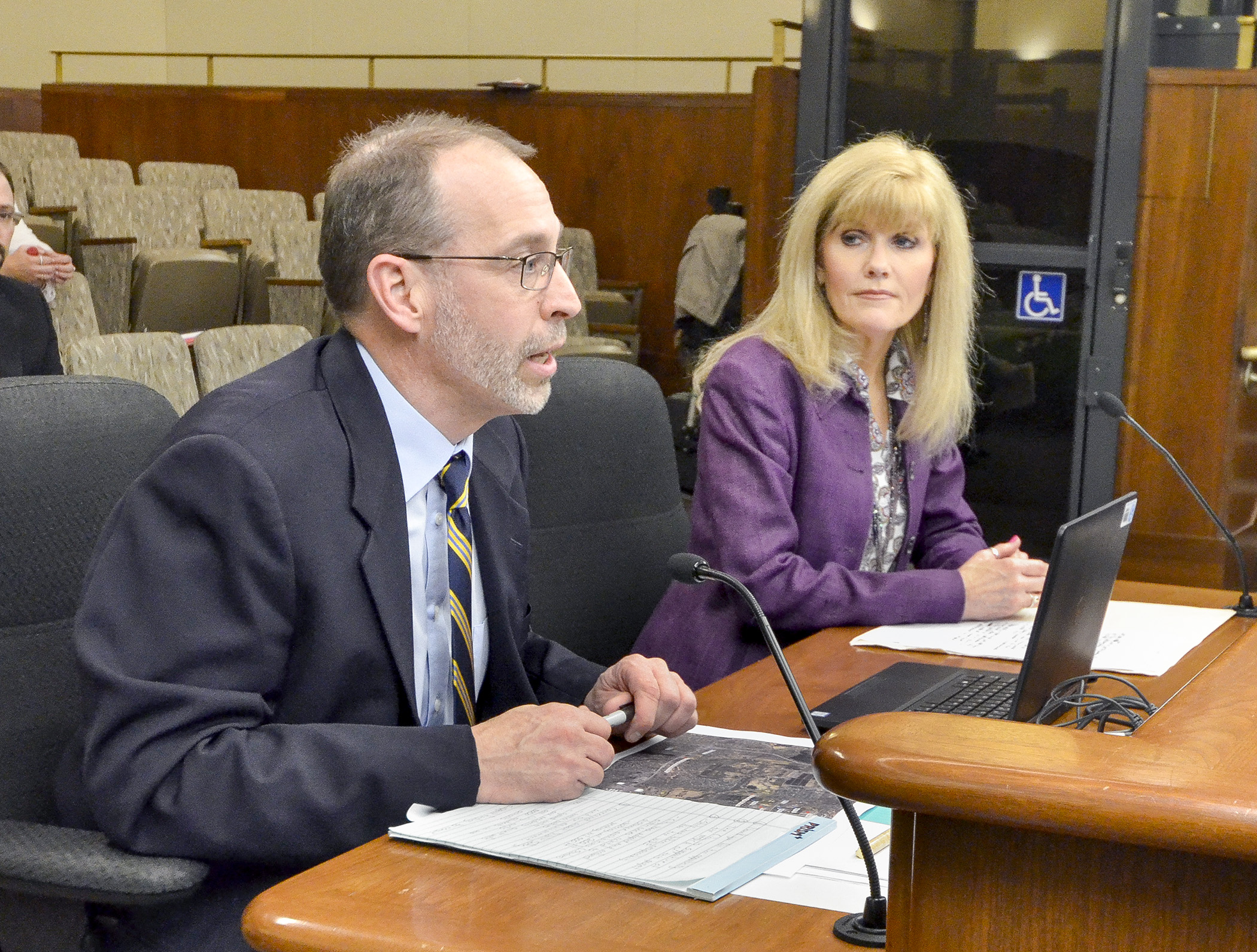More than $11 million sought for landfill hazardous waste removal
Between November 1972 and January 1974, approximately 6,600 barrels of hazardous waste were dumped in part of an Andover landfill.
An estimated 20,000 people now live — and more than 5,000 students attend school — within a mile of the waste pit that leaks and is contaminating groundwater below it. However, city drinking water is safe.
“It’s like a little mountain in the middle of town,” said Rep. Mark Uglem (R-Champlin).
Sponsored by Rep. Peggy Scott (R-Andover), HF269 would appropriate $11.35 million in bond proceeds to remove the hazardous waste and contaminated soil from the pit that is about a third of an acre in size. A clay liner and clean soil would be placed at the bottom of the excavated area, solid waste from the edges of the landfill would fill the hole and a cover would be placed over the disturbed area. The hazardous waste would be taken to a site where it can be properly be disposed.
The 2016 Legislature provided $650,000 for preparation work that is now underway. A design is expected to be ready by June.
 Andover City Administrator Jim Dickinson testifies before the House Capital Investment Committee March 29 in support of a bill sponsored by Rep. Peggy Scott, right, that would provide closed landfill cleanup funding. Photo by Andrew VonBank
Andover City Administrator Jim Dickinson testifies before the House Capital Investment Committee March 29 in support of a bill sponsored by Rep. Peggy Scott, right, that would provide closed landfill cleanup funding. Photo by Andrew VonBankNo action was taken Wednesday by the House Capital Investment Committee, which heard the proposal for information purposes because the bill is in possession of the House Environment and Natural Resources and Policy and Finance Committee. A companion, SF449, sponsored by Sen. Jim Abeler (R-Anoka), awaits action by the Senate Capital Investment Committee.
Kirk Koudelka, assistant commissioner with the Pollution Control Agency, said the site was in the federal superfund program until the state created the Landfill Cleanup Act in 1994.
According to the agency, “funding to do this work comes from the MPCA’s Remediation Fund (solid waste management tax), state general obligation bonds, and past settlements with insurance carriers that provided landfill-related insurance coverage.”
As part of the state act, the voluntary closed landfill program provides money “to properly close, monitor, and maintain Minnesota's closed municipal sanitary landfills.” The idea is to protect health and safety, limit environmental impacts and mitigate water degradation.
Scott said of the 109 landfills in the program, only this one has a hazardous waste pit.
“In state government, we fund a lot of things that many would question whether they’re really a function of state government,” she said. “The cleanup of this state-owned site, in my mind, leaves no question that this is the function of government.”
Since 1995, $13.7 million has been spent on systems to reduce health and environmental risks associated with the site. Operation and maintenance costs exceeded $500,000 last year.
“Right now there’s a significant cost with what we’re continuing to do year after year after year. So there is a payback to the ask for cleaning this up,” Uglem said.
Related Articles
Search Session Daily
Advanced Search OptionsPriority Dailies
Speaker Emerita Melissa Hortman, husband killed in attack
By HPIS Staff House Speaker Emerita Melissa Hortman (DFL-Brooklyn Park) and her husband, Mark, were fatally shot in their home early Saturday morning.
Gov. Tim Walz announced the news dur...
House Speaker Emerita Melissa Hortman (DFL-Brooklyn Park) and her husband, Mark, were fatally shot in their home early Saturday morning.
Gov. Tim Walz announced the news dur...
Lawmakers deliver budget bills to governor's desk in one-day special session
By Mike Cook About that talk of needing all 21 hours left in a legislative day to complete a special session?
House members were more than up to the challenge Monday. Beginning at 10 a.m...
About that talk of needing all 21 hours left in a legislative day to complete a special session?
House members were more than up to the challenge Monday. Beginning at 10 a.m...